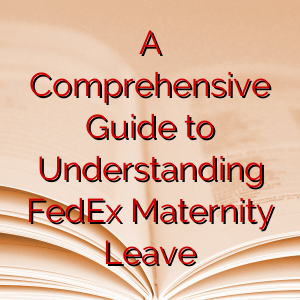Maternity Leave Application Letter After Delivery [Written Examples]
Explore the intricacies of writing a maternity leave application letter after delivery with this detailed, guide. Learn to craft a clear, concise, and professional letter that caters to your needs and respects your workplace’s policies.
Getting the news of a new arrival is exhilarating. However, managing work responsibilities alongside motherhood can be challenging. One of the first steps is drafting a maternity leave application letter after delivery. This document formally communicates your situation to the employer, allowing the organization to manage resources during your absence.
Understanding
A maternity leave application letter after delivery is a formal document notifying your employer about your absence due to childbirth. This letter is crucial for maintaining transparency within the workplace and ensures that your maternity rights are honored without affecting the organization’s workflow.
Crafting the Perfect Maternity Leave Application Letter After Delivery: Key Tips and Guidelines
When writing your maternity leave application letter, consider the following tips:
- Use a formal and respectful tone: This is a professional document, so it’s essential to keep your language formal.
- Be clear and concise: Avoid unnecessary details, but ensure you provide your due date and expected return date.
- Plan your handover: Propose a handover plan to manage your tasks during your absence.
Example 1: A Basic Maternity Leave Application Letter
Subject: Maternity Leave Application
Dear [Manager’s Name],
I am writing to inform you of my pregnancy and my intention to take the allotted maternity leave effective [start date]. I anticipate my return to work on [return date].
Thank you for your understanding.
Best Regards,
[Your Name]
Example 2: A Detailed Maternity Leave Application Letter
Subject: Maternity Leave Notice – [Your Name]
Dear [Manager’s Name],
I am excited to announce that I am expecting a baby. The due date is [due date], and I intend to start my maternity leave on [start date]. I plan to delegate my responsibilities to [colleague’s name] during my absence.
Sincerely,
[Your Name]
Example 3: A Maternity Leave Application Letter Addressing the Handover Process
Subject: Anticipated Maternity Leave – [Your Name]
Dear [Manager’s Name],
I am thrilled to share that I will be welcoming a new addition to my family. My expected due date is [due date], and I would like to take my maternity leave from [start date] to [return date]. I have discussed the handover process with [colleague’s name], who will be covering my responsibilities.
Kind Regards,
[Your Name]
Example 4: A Maternity Leave Application Letter with a Request for Remote Work
Subject: Maternity Leave and Remote Work Request
Dear [Manager’s Name],
I am pleased to inform you that I am expecting a baby. My maternity leave is proposed to start from [start date], with a return date of [return date]. I would also like to discuss the possibility of working remotely part-time during my leave if it suits the organization’s policies and needs.
Best Regards,
[Your Name]
FAQs on Maternity Leave Application Letters After Delivery
When should I submit a maternity leave application letter?
It’s best to submit the letter as soon as possible, giving your organization ample time to prepare for your absence.
Should I discuss the handover process in the letter?
While not mandatory, it’s a good practice to mention your handover plan to reassure your employer that your duties will be covered during your absence.
Can I request remote work in my maternity leave application letter?
Yes, if it aligns with your organization’s policies and the nature of your work, you can certainly discuss this possibility.
Conclusion
Writing a maternity leave application letter after delivery is an essential step to ensuring a smooth transition into this exciting new phase of life. The letter must be formal, clear, concise, and should convey your leave dates and any contingencies planned for your absence. The examples and tips provided here should prove beneficial in your endeavor to craft an effective letter.

Hello! Welcome to my Blog StudyParagraphs.co. My name is Angelina. I am a college professor. I love reading writing for kids students. This blog is full with valuable knowledge for all class students. Thank you for reading my articles.

![Maternity Leave Application | How to Write [ Samples & Guide ] Maternity Leave Application | How to Write [ Samples & Guide ]](https://leaveapplication.co/wp-content/uploads/2021/06/Maternity-leave-application-letter-sample-1.webp)


